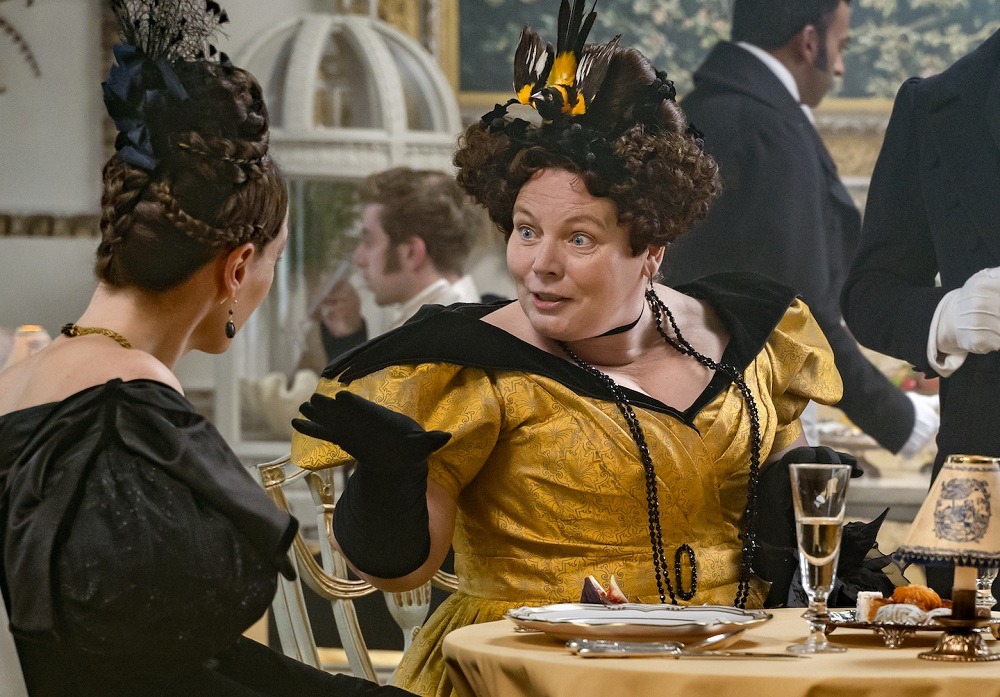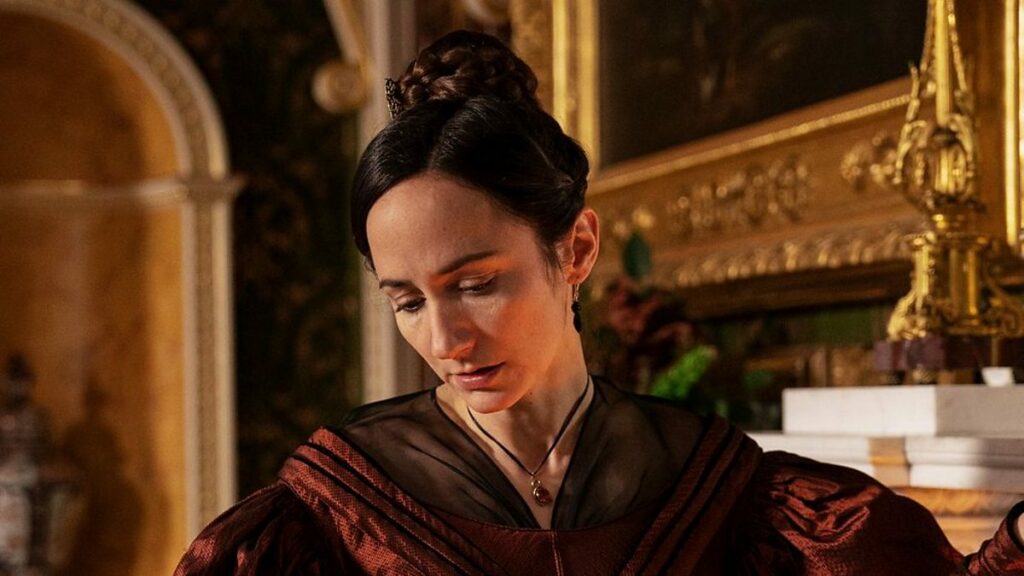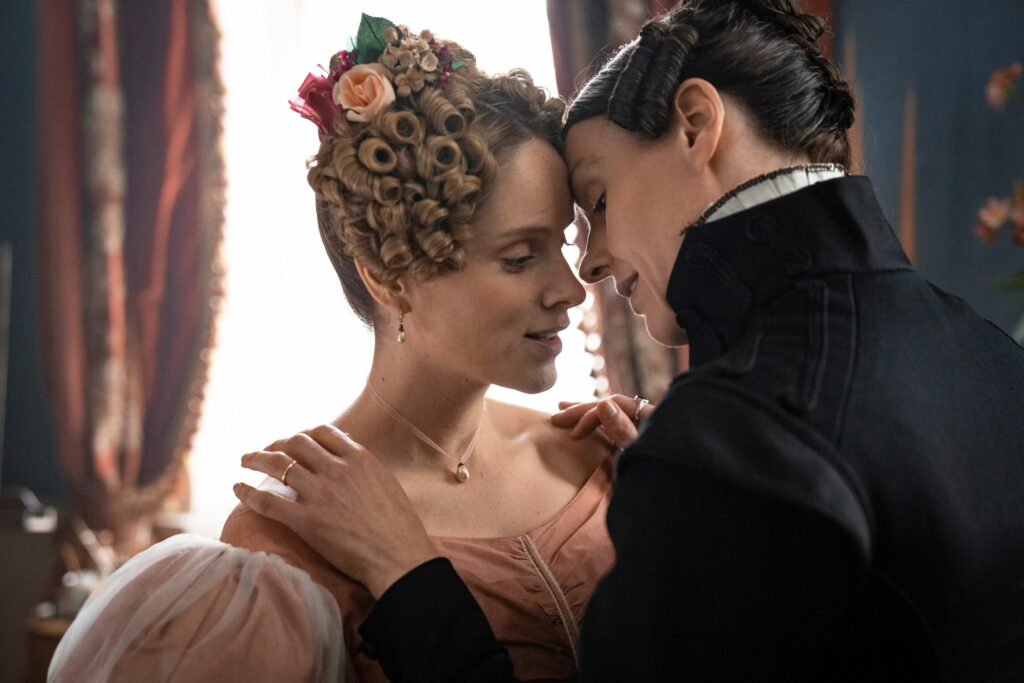Gentleman Jack: The Real Story Behind Anne Lister and Her Lovers
Gentleman Jack has captivated lesbians around the world with its depiction of the whirlwind romance between Anne Lister and Ann Walker. The show also explores Lister’s lifelong entanglement with Mariana Belcombe – which lasted through Mariana’s marriage to Charles Lawton, and even rekindled during Lister’s relationship with Ann Walker.
But Anne Lister was a lesbian Lothario. We all know a butch lesbian fuckboy whose propensity for picking up women is matched only by her skill for breaking hearts. And Anne Lister was the original. She had more lovers than Gentleman Jack acknowledges. We know this because she wrote about them in her diaries.
Eliza Raine
When Anne Lister was 14, she was sent to the Manor School in York. An “unmanageable tomboy”, her family thought she’d be improved by this elite environment where the wealthy sent their daughters. During her time there, she became friends with heiress Eliza Raine. As Gentleman Jack revealed, she was a biracial Asian girl, and perhaps this outsider status added to her appeal. The relationship quickly grew in intensity. In her diaries Anne wrote often of “felix”, code for their sexual encounters. Anne and Eliza talked about spending their lives together.
Eliza was Anne’s first love interest. But the relationship didn’t last. Through Eliza, Anne was introduced to York’s social scene – and there she met her next lover, Isabella Norcliffe. Eliza was distraught over losing Anne. Her mental health declined, and in 1814 Eliza was put into the care of Doctor Belcombe (remember that name). Anne visited Eliza regularly for the rest of her life.
In Gentleman Jack, the specter of Eliza Raine hangs over Anne’s relationship with Ann Walker. Ann, who has suffered from her own mental health issues, is haunted by the similarities between herself and Eliza – who has been an inmate of an asylum for twenty years.
Fun fact: Eliza Raine is widely believed to have been Charlotte Brontë‘s inspiration for Mrs Rochester – the mad wife in the attic in Jane Eyre.
Isabella Norcliffe
Isabella Norcliffe, aka Tib, was Anne’s next paramour. By 1810 Anne was very much invested in the friendship. She was drawn to the glamour of the Norcliffes’ opulent lifestyle, and the confidence with which the family carried themselves. Isabella was six years older than Anne, and far more knowing than Anne or Eliza, which added to her allure.

Isabella fell hard for Anne, and was deeply disappointed when she declined to be Isabella’s long-term partner. While they were together Anne met and fell for Mariana Belcombe. (See what I mean about Anne Lister being a serial fuckboy?) However, Anne and Isabella remained lifelong friends and occasional lovers.
Mariana Belcombe
Many of the women who translated Anne’s diaries into English believe that Mariana was the great love of Anne’s life. And there’s plenty of evidence to back this theory. A doctor’s daughter, Mariana was the poorest of Anne’s lovers; it’s the only relationship Anne ever had that wasn’t, in part, motivated by financial gain.
Anne met Mariana at a party the Norcliffes threw in 1812. And it was lust at first sight. They wrote to each other every day, and regularly travelled the 40 miles between York and Halifax. Anne and Mariana even exchanged rings.

But Anne’s happiness didn’t last. In 1815 Mariana announced she was marrying Charles Lawton, a wealthy widower. Anne was heartbroken. She and Mariana’s sister accompanied Mariana on her honeymoon, and Anne’s diary entries from this time showed a blistering fury.
However, Anne got her revenge. She had a fling with Mariana’s sister – also called Anne. (Again: Anne Lister was a fuckboy.) Despite all this, Anne and Mariana’s relationship resumed. Mariana feigned toothache and brought Anne into her bed. Reunited, Mariana asked Anne “to be faithful, to consider myself as married.” But it didn’t last.
Anne’s masculine attire and unladylike behaviour caused a stir, and Mariana – ashamed – distanced herself. Anne was crushed. Their relationship continued, but it was never the same. And Mariana left Anne with an unpleasant legacy. In 1820 Charles contracted a venereal disease from an extramarital affair. He passed it on to Mariana, who infected Anne. The “venereal taint” was incurable and painful.
Maria Barlow
While Anne was with Mariana, she had a fling with a widow: Maria Barlow. They met during Anne’s stay in Paris during 1824. Though Anne flirted with many women, it was Maria she spent her days and nights with. Her diaries show Anne had real feelings for Maria. They even moved in together. But she didn’t want to commit to a long-term relationship while there was still hope with Mariana. Charles being much older, Anne and Mariana both dreamed of a life together after his death.
But Maria wasn’t rich, and Anne wanted a lover who could better her circumstances. When her uncle James died and Anne became the proprietor of Shibden Hall, she returned to England, effectively ending the affair.
Sibella MacLean
By 1928 Anne realized that she couldn’t waste her life waiting for Charles Lawton to die. And she began the search for a new life partner. Enter Isabella Jean MacLean. Anne met Sibella through the Norcliffes and was impressed by her good breeding – the MacLeans were a noble Scottish family. Anne and Sibella toured Scotland together, and they became lovers during the trip.
It was a passionate relationship with the opportunity for social advancement – everything Anne wanted. In her diary Anne wrote that “I would rather spend my life with Miss MacLean than any one.”
But it was not to be. Anne wanted Sibella to move to Paris with her. But her health was deteriorating, and Sibella stayed in Scotland. They exchanged letters for the rest of Sibella’s life, until she died of consumption in 1830.
Ann Walker
Anne first met Ann Walker when she was a teenager. Fifteen years Anne’s junior, she didn’t make much of an impression. But they became friends later on – and it’s not coincidence that Anne’s interest began at the time Ann inherited a sizable fortune. Within days of resuming the friendship, Anne was envisioning Ann as her life-partner. They were lovers within a matter of weeks.
And by 1832 Anne and Ann were extremely close. “Perhaps after all, she will make me really happier than any of my former flames,” Anne wrote in her diary. Anne asked Ann to move into Shibden, though she was initially reluctant. Frustrated, Anne travelled through Europe and Russia. But while she was gone Ann turned down an offer of marriage – which gave Anne hope.
At 42, Anne was ready for serious companionship. And Ann found the courage to move into Shibden with her, delighting Anne. On Easter Sunday, 1834, they took the sacrament together at Holy Trinity Church in York– the first known lesbian marriage – and considered themselves wed from that time on. Afterwards the two women went on a honeymoon together, traveling for three months through France and Switzerland.

They altered their wills in favor of each other. And Ann’s wealth funded extensive repairs of Shibden Hall. The relationship wasn’t always happy – Ann often felt neglected, as Anne spent much time and energy on her business concerns. But it was stable and committed.
Though two women living together led to much gossip, and mocking adverts in the local paper about the marriage of “Captain Tom Lister of Shibden Hall to Miss Ann Walker”, the relationship survived scandal. Anne remained with Ann until her death in 1840.





